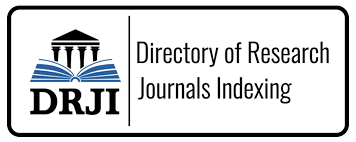Pengaruh Insentif Terhadap Prestasi Kerja Pegawai Pada Kantor Kelurahan Tanah Mas Banyuasin
DOI:
https://doi.org/10.31851/jmwe.v17i4.5099Abstract
ABSTRAK
Â
Tujuan penelitian ini untuk mengetahui seberapa besar pengaruh insentif terhadap prestasi kerja pegawai pada Kantor Kelurahan Tanah Mas Banyuasin. Seluruh pegawai PNS dijadikan sampel, sedangkan teknik pengambilan sampel menggunakan teknik sampling jenuh. Untuk teknik pengumpulan data menggunakan kuisioner, wawancara, dan dokumentasi dengan skala likert yang telah diuji coba terlebih dahulu dengan menggunakan uji normalitas, uji validitas dan uji reliabilitas. Teknik analisis data yang digunakan adalah analisis regresi linier sederhana, analisis koefisien determinasi, dengan pengujian hipotesis uji t dengan bantuan software SPSS 22 for windows. Dari hasil analisis regresi linier sederhana diperoleh persamaan Y = 30,175 + 0,505X + 3,397. Konstanta 30,175 Â artinya jika Insentif (X) nilainya 0, maka Prestasi Kerja (Y) nilainya sebesar 30,175. Sedangkan koefisien regresi variabel Insentif (X) sebesar 0,505 artinya jika insentif mengalami peningkatan satu-satuan, maka prestasi kerja akan mengalami peningkatan sebesar 0,505. Koefisien determinasi R Square = 0,241. Hal ini berarti 24,1% Prestasi kerja dipengaruhi oleh variabel Insentif, sedangkan sisanya yaitu 75,9% Prestasi Kerja dipengaruhi oleh variabel-variabel lainnya yang tidak diteliti dalam penelitian ini. Hasil penelitian ini menunjukkan bahwa insentif berpengaruh positif dan signifikan terhadap prestasi kerja dengan melihat nilai thitung 2,983, signifikansi sebesar 0,006. Dengan menggunakan batas 0,05 di dapat ttabel 1,7011 ini berarti thitung 2,983 > ttabel 1,7011 dengan taraf signifikansi 0,006 < 0,05, yang berarti Ho ditolak dan Ha diterima yang artinya variabel insentif berpengaruh terhadap prestasi kerja pegawai pada Kantor Kelurahan Tanah Mas Banyuasin.
Â
Kata Kunci : Insentif dan Prestasi Kerja
Â
ABSTRACT
Â
The purpose of this study was to determine how much the influence of incentives on employee performance at the Tanah Mas Banyuasin Village Office. All civil servant employees were sampled, while the sampling technique used saturated sampling techniques. For data collection techniques using questionnaires, interviews, and documentation with a Likert scale that have been tested first using the normality test, validity test and reliability test. The data analysis technique used is simple linear regression analysis, analysis of the coefficient of determination, by testing the hypothesis t test with the help of SPSS 22 for windows software. From the results of simple linear regression analysis, the equation Y = 30.175 + 0.505X + 3.397 is obtained. A constant of 30.175 means that if the incentive (X) is 0, then the work performance (Y) is 30.175. Meanwhile, the incentive variable regression coefficient (X) is 0.505, meaning that if the incentive has increased one-unit, then the work performance will increase by 0.505. The coefficient of determination R Square = 0.241. This means that 24.1% of work performance is influenced by the incentive variable, while the remaining 75.9% of work performance is influenced by other variables which are not examined in this study. The results of this study indicate that incentives have a positive and significant effect on work performance by looking at the tcount of 2.983, a significance of 0.006. By using a limit of 0.05 in getting t table 1.7011 this means that tcount 2.983> ttable 1.7011 with a significance level of 0.006 <0.05, which means that Ho is rejected and Ha is accepted, which means that the incentive variable has an effect on employee work performance at the Tanah Village Office. Mas Banyuasin.
Â
Keywords: Incentives and Job Performance
References
Bungin, Burhan, 2013. Metodelogi Penulisan Sosial dan Ekonomi. Penerbit Kencana, Jakarta.
Chece, Wardah, 2013. Prestasi Kerja. (Online), (http://wardahcheche.blogspot.com/2013/05/prestasi-kerja.html, diakses 28 Maret 2015)
Hasan, Iqbal, 2013. Analisis Data Penelitian Dengan statistic. Penerbit: PT. Bumi Aksara, Jakarta.
Hasibuan, Malayu S.P, 2012. Manajemen Sumber Daya Manusia. Penerbit : PT. Bumi Aksara, Jakarta.
, 2013. Manajemen Sumber Daya Manusia. Penerbit Bumi Aksara, Jakarta.
Kuncoro, Mudrajad. 2011. Metode Kuntitatif Dalam Program SPSS. Penerbit Sekolah Tinggi Ilmu Manajemen YKPN Yogyakarta.
Mangkunegara, A.A. Anwar P, 2009. Manajemen Sumber Daya Manusia Perusahaan. Penerbit PT. Remaja Rosda Karya, Bandung.
Rianse, Usman dan Abdi, 2012. Metodelogi Penelitian Sosial dan Ekonomi, Penerbit Alfabeta, Bandung.
Riduwan,2014, Dasar-dasar Statistika, Cetakan ke 12: mei. Penerbit: Alfabeta, Bandung.
Rivai, Veithzal, 2009. Manajemen Sumber Daya Manusia untuk Perusahaan. Penerbit Raja Grafindo Persada, Yogyakarta.
Oktariansyah, 2017. Pengaruh Kompensasi Terhadap Prestasi Kerja Karyawan Pada Cv. Sedulur Palembang. Jurnal Media Wahana Ekonomika, Vol. 14, No.1, April 2017 : 67-74
, 2018. Pengaruh Insentif Terhadap Produktivitas Kerja Karyawan CV. Cst Virtual System Singapore Region Sumatera. Jurnal Media Wahana Ekonomika, Vol. 15, No.1, April 2018 : 77-90
Siregar, Syofian, 2013. Metode Penelitian Kuantitatif Dilengkapi dengan Perbandingan Perhitungan Manual dan SPSS. Penerbit Kencana Prenanda Media Group, Jakarta.
Sujarweni, Wiratna V, 2014. SPSS Untuk Penelitian. Penerbit Pustaka Baru Pres, Yogyakarta.
Sugiyono, 2011, Metode penelitian bisnis. Penerbit CV. Alfabeta, Bandung.
, 2013, Metode penelitian bisnis. Penerbit CV. Alfabeta, Bandung.
, 2014, Metode Penelitian Manajemen. Penerbit Alfabeta, Bandung.
Sutrisno, Edy, 2009. Sumber daya manusia. Edisi pertama. Penerbit Kencana Prenada Media Grup, Jakarta.
Sutrisno, Edy, 2012. Manajemen sumber daya manusia. cetakan ke empat. Kencana prenada media group, Jakarta
Suwanto, Priansa, Juni 2011, Manajemen Sumber Daya Manusia dalam Organisasi Publik dan Bisnis. Penerbit Alfabeta, Bandung.
Yani, Muhammad, 2012. Manajemen Sumber Daya Manusia. Mitra Waca Media, Jakarta.
Downloads
Published
Issue
Section
License
The copyright of the received article shall be assigned to the publisher of the journal licensed under a Creative Commons Attribution-NonCommercial 4.0 International License in line with the license, authors and any users (readers and other researchers) are allowed to share and adapt the material only for non-commercial purposes. In addition, the material must be given appropriate credit, provided with a link to the license, and indicated if changes were made. If authors remix, transform or build upon the material, authors must distribute their contributions under the same license as the original.























